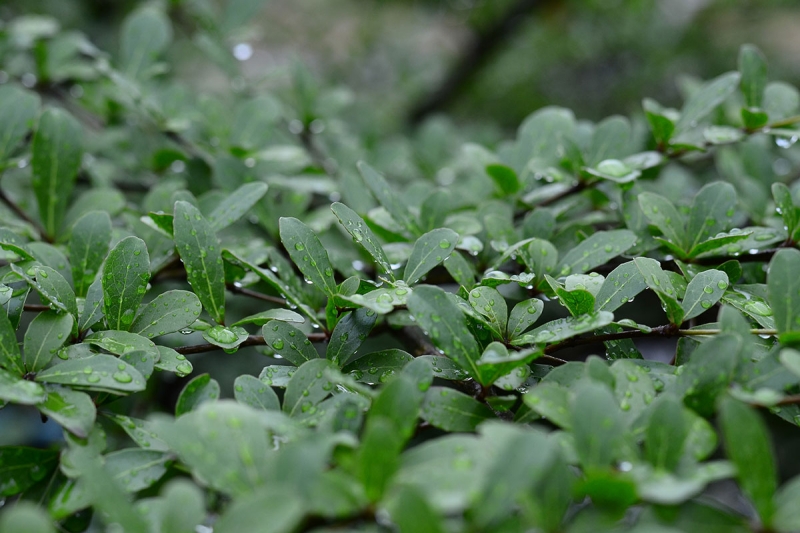Why use cover crops?
Have you been looking for ways to improve your soil's fertility and tilth? How about methods for suppressing weeds or retaining moisture? What about attracting those elusive beneficial insects? Your solutions may be found in cover cropping - a time-tested method for managing healthy gardens. Using cover crops can:
- Protect soil in winter months
- Attract beneficial insects
- Break up clay or hardpan
- Increase nutrients in your soil
- Conserve soil moisture
- Suppress weeds
- Cover & protect unused areas
- Prevent erosion by wind and rain
- Increase organic matter in your soil
- Recycle garden nutrients
What is a cover crop?
Also referred to by some experts as ‘green manures,’ cover crops are any type of planting that covers your soil when it is not being used for active production. Cover crops can be tilled under or harvested and composted to add organic matter and nutrients to your soil. Although cover cropping has traditionally been used by farmers for maintaining healthy soil, many home and urban gardeners are using the same techniques on a smaller scale.
A good gardener recognizes that successful gardening is dependent on the soil. Many amendments may be employed to improve soil tilth and fertility, including compost, leaves, manure or grass clippings. Using cover crops is also an excellent option for soil improvement because other amendments may difficult to come by, and you can produce cover crops on your own space. When properly incorporated with your yearly garden plan, cover crops provide the added benefits of conserving moisture, increasing life in the soil, and even attracting beneficial insects to your garden.
Using the right cover crop
Although at first it may seem challenging to understand all of the different kinds of cover crops and their benefits, the beauty of using cover crops is that you can select just the right plant for your soil, climate and long-term plans. By learning about the benefits and cultural requirements of each crop, you will be able to make an informed decision for you and your garden.
Cover crops can be divided into three main categories:
- Legumes – Legumes are a favorite cover crop because they fix nitrogen in your soil. Some legumes have large taproots that go deep into the soil and ‘mine’ nutrients from below. The legume family includes: clovers, vetch, alfalfa, fava beans, Austrian winter peas, medic, and soybeans. Legumes tend to do better in cooler climates, and are suited to spring and fall plantings.
- Cereals – Cereal plants are usually quick-growing. They make great green manures because they are easily harvested and composted, or tilled under, providing a great source for nitrogen and organic matter. Cereals include: annual rye, wheat, oats, ryegrass, barley, sorghum and sudangrass.
- Broadleaf Plants – Broadleaf plants include : buckwheat, rape, mustard, turnips, daikon radish, and oilseed radish. These plants tend to shade out competitive weeds. Buckwheat is very fast growing and comes right up in hot weather. The brassicas (rape, mustard, turnip/radish) tend to have taproots that can break up hardpan in the soil, and bring up previously untapped nutrients from deeper soils.
Cover cropping tips
- Some crops may be used for ‘undersowing’ or interplanting. This allows you to plant a living mulch while your vegetables are growing. About 2 weeks after planting your primary crop, just sprinkle low-growing covers (like white clover) at the base of your planting to conserve moisture add nitrogen, and improve the soil structure.
- Most cover crops can be ‘broadcasted’ or spread evenly over the space that you have set designated. It helps to rake the seeds into your soil after you have prepared the bed for planting.
- Remember that it takes 2-3 weeks for a cover crop that has been tilled in to decompose. Resist the urge to plant during this period, as the decomposition process can inhibit seed germination and root growth.
- If you are planting a crop in the fall winter soil protection, you will need to plant your seeds about 30 days before the first frost date.
- Using a seed mix with a combination of good cover crops may be a good option if you are interested in seeing which crop works best for your needs.
- Some cover crops can spread to other parts of your garden. If you are concerned about this, remember to select an annual crop that dies back in the winter, or a plant that you don’t mind popping up uninvited!
- By cutting down cover crops before they become mature or woody, you will be saving yourself a lot of effort when tilling or harvesting the plants.
- The use of inoculant when planting legumes can help germination rates.

